This was published 1 year ago
Opinion
The futuristic Asian city few Australians visit (or know about)
Ben Groundwater
Travel writerYou’ve never been anywhere like Astana. This is a city that, up until last year, was called Nur-Sultan; though, just a few years before that it was still known as Astana; although, 15 years or so before that it was called Akmola; and six or seven years before that it was called Tselinograd.
And that’s not even the full history of the names of the capital of the country that is now called Kazakhstan. No capital city on Earth has worked its way through more monikers than Astana.
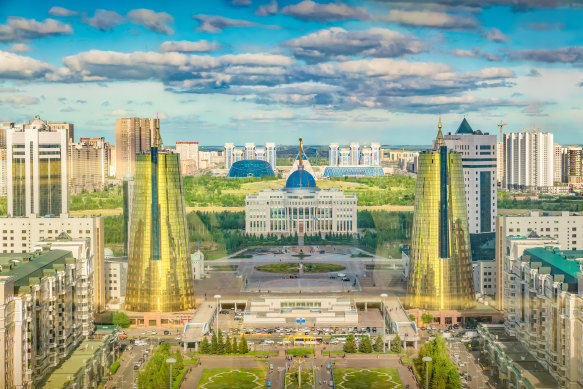
Astana features some of the world’s most amazing architecture.Credit: iStock
Still, that’s not the most interesting thing about this city, a cold, windy place in a stark setting on the Kazakh Steppe, with no hill or mound or even a bump for hundreds of kilometres around, just flat grassland and a chilly breeze.
Astana was never meant to be a capital. Up until 1997 that prize went to Almaty, the gorgeous city in Kazakhstan’s south, a place lined with stately buildings in the shadow of the snow-capped Trans-Ili Alatau mountains.
But then along came Nursultan Nazarbayev, Kazakhstan’s post-Soviet authoritarian leader, and the change was made. Akmola, with its long rows of Communist-era apartment blocks and frigid temperatures, would be the new capital. It was renamed with a Kazakh word that means “capital city”.
Functional, if not exactly poetic.
But now, check out Astana.
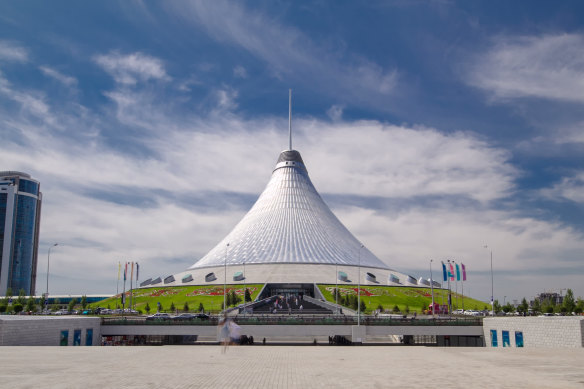
The Khan Shatyr is a 150-metre-high tent-shaped building that houses a shopping mall and a fake beach.Credit: Shutterstock
Nazarbayev did all sorts of things during his reign that were, shall we say, less than ideal. But he also transformed his new capital into a futuristic wonderland, a sort of Dubai of the Steppe, a city filled with incredible modern architecture that abuts those drab Soviet flats.
Walk the cold streets here and you will see the Palace of Peace and Reconciliation, a 62-metre-high pyramid entirely encased in stained glass. You might spot Khan Shatyr, a 150-metre-high tent-shaped building that houses a shopping mall and a fake beach.
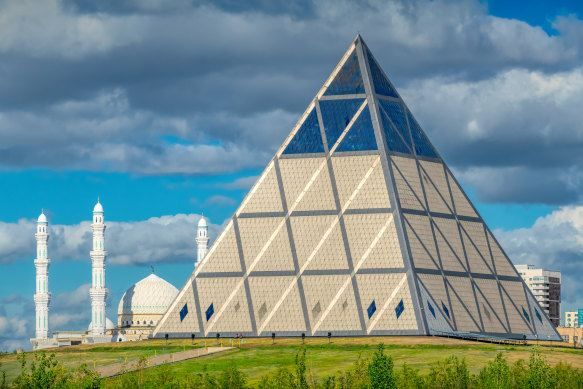
The Palace of Peace and Reconciliation, also known as the Pyramid of Peace and Accord, in Astana.Credit: Getty Images
Perhaps you will see Nur Alem, which at 80 metres in diameter is the world’s largest glass sphere. And you will almost definitely go past the Nazarbayev Centre, a huge, eye-shaped building designed by the British architect Norman Foster, a library and archive dedicated entirely to books about and artifacts connected to Nursultan Nazarbayev.
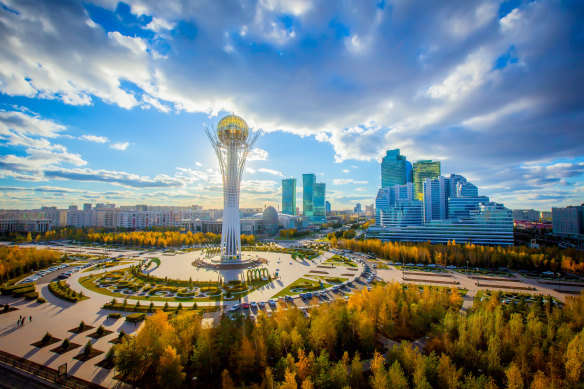
Baiterek Tower features an observation deck where you can take in some of Astana’s highlights.Credit: iStock
And that’s barely even scratching the surface of the coterie of wild and wonderful buildings that have appeared in Astana since it graduated from humble Akmola.
Welcome to Central Asia. Welcome to a part of this continent that probably isn’t the first to spring to mind when you think about our nearest neighbour. Asia, to us, tends to be Thailand and Indonesia, Japan and South Korea. It might be India. It might be China. But it’s probably not Kazakhstan, Uzbekistan, Turkmenistan and the like.
That’s a shame, too. Because there is a whole world to discover in these countries, a whole new set of histories that you’re probably unfamiliar with, cultures that we in Australia tend to know so little about.
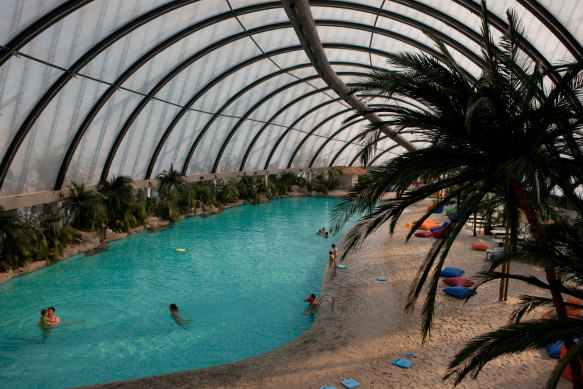
Khan Shatyr’s Sky Beach Club includes an indoor lagoon and glass atrium.
Who knew Astana featured some of the world’s most amazing architecture? I didn’t, until I went there. I’m still baffled by its existence really, though at least I know it’s there now.
Kazakhstan is an incredible place, with vast swathes of open space punctuated every now and then by cities that run the gamut from drab to mind-boggling.
And what of its neighbours? Uzbekistan might just be the true highlight of Central Asia, with so much history to lean on. This country was the halfway point of the legendary Silk Road, a natural meeting place for those from Asia and Europe, a sprawling marketplace in which to trade goods and swap ideas.
That geography bred wealth, which you still see in the madrasas and mosques of Samarkand, and the towering minarets of Bukhara. Even Tashkent, post-Soviet and sometimes unlovely, has a whole lot going for it if you know where to look.
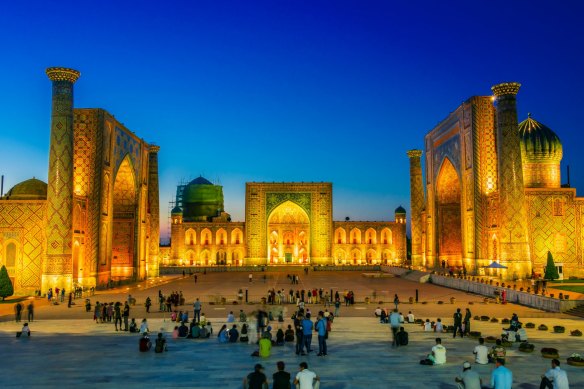
Registan, an old public square in the heart of the ancient city of Samarkand. Uzbekistan is a highlight of Central Asia.Credit: iStock
And we haven’t mentioned Turkmenistan, a country that periodically just dips out of the wider world, that closes its doors and won’t let anyone in. Right now it’s open to tourism, meaning you can poke around a place like no other, where the capital, Ashgabat, boasts the world’s highest concentration of white marble buildings, and where citizens are strongly “encouraged” to drive white cars only.
It’s not all quirk though: there’s ancient Turkmen culture here, which dates to the Middle Ages. Fascinating stuff.
And then you have the mountains and the beauty of Kyrgyzstan, the raw wonder of Tajikistan.
This is Asia, real Asia, as much as anywhere else you will find in Traveller or picture in your mind’s eye. It is snow-covered mountains and glass-covered pyramids. It is cities that haven’t changed in millennia, and some that swap their names faster than most of us can keep up.
You’ve never been anywhere like it.
Sign up for the Traveller Deals newsletter
Get exclusive travel deals delivered straight to your inbox. Sign up now.